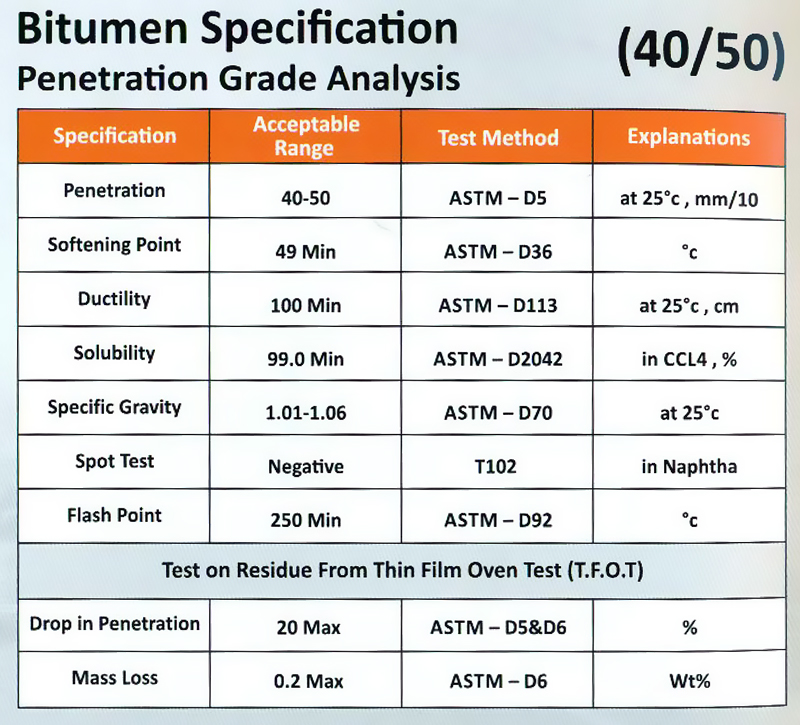Penetration grade is a commonly used classification system for Bitumen, which is a vital component in road construction and waterproofing applications. The penetration grade system is based on the Bitumen’s consistency, which is determined by measuring the depth in tenths of a millimeter that a standard needle penetrates the Bitumen sample under specific conditions of time, temperature, and load.
The penetration test is conducted by applying a standard load of 100 grams to a standard needle with a diameter of 1/10th of a millimeter for a duration of 5 seconds at a temperature of 25°C. The depth in tenths of a millimeter that the needle penetrates the Bitumen sample is the penetration value.
Penetration grade Bitumen is classified based on the penetration value as per ASTM D5-18 standards, ranging from very hard to very soft. The grades range from 10 to 500 penetration. Bitumen with a higher penetration grade is softer and more workable, making it suitable for use in warmer climates, while Bitumen with a lower penetration grade is harder and less workable, making it suitable for use in colder climates.
Penetration grade is an essential characteristic of Bitumen and is used as a basis for selecting the appropriate Bitumen for specific applications. The penetration grade of Bitumen determines the properties such as stiffness, adhesion, durability, and resistance to deformation under various climatic conditions.
To make long story short, penetration grade is a measure of the consistency of Bitumen, and it is an essential characteristic used in selecting the appropriate Bitumen for specific applications. It is determined by measuring the depth in tenths of a millimeter that a standard needle penetrates a Bitumen sample under specific conditions of time, temperature, and load.

